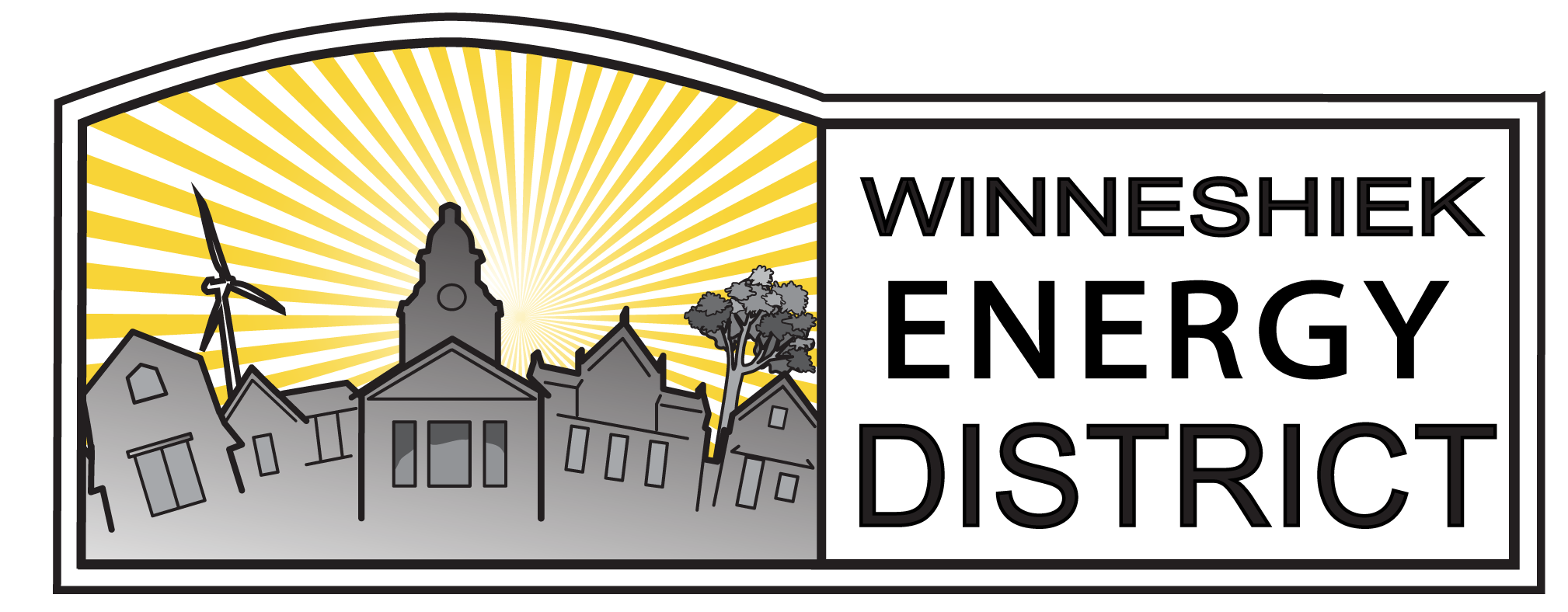Five Feet High and Risin’
Andy Johnson, Executive Director, Winneshiek Energy District
How high’s the water, mama?
Two feet high and risin’
How high’s the water, papa?
She said it’s two feet high and risin’
We can make it to the road in a homemade boat
That’s the only thing we got left that’ll float
It’s already over all the wheat and oats,
Two feet high and risin’
Johnny Cash was no stranger to hard times and trouble in the fields.
His 1959 hit Five Feet High and Risin’ describes Cash’s experience as a 5-year-old farm boy, flooded off the land. It is both a literal and metaphorical story of rural people, underwater.
We Iowans know that story all too well. We’re increasingly underwater from climate change, health care, and especially in Alliant territory, energy costs. A recent ruling from the Iowa Utilities Board highlights the challenges of keeping our families and communities above water.
The rate case should awaken Iowans to the wealth extraction business model of investor-owned utilities, and also to the tremendous prosperity opportunities of locally-owned clean energy in every Iowa county and community.
While a settlement agreement brought Alliant’s proposed electric rate increase down nearly 40%, the Board approved an 11-15% hike for most customers, representing another $125 million drained from customers and communities every year going forward. This comes on the heels of a significant hike in 2018, and another likely in 2021. Over 5,600 commenters – including over 60 cities and counties – said enough is enough!
“How high’s the water mama? Three feet high and risin’.”
Beyond lowering the overall hike, advocates managed to protect solar owners both large and small from yet another utility attempt at major discriminatory tariffs and fees. And, the ruling requires a long-overdue analysis of the economic viability of Alliant’s remaining coal plants, opening the door to an accelerated phase-out of coal in Iowa and a cleaner and more affordable energy future.
In an extraordinary discussion, however, the Board criticized Alliant extensively for management inefficiency and poor service to customers and communities.
“The Board … has serious concerns with the management decisions and actions by Alliant. The Board perceives a shift in decisions by Alliant from those focused on Iowa customers to those focused on or coming from the parent company and its shareholders.”
Regarding Alliant’s behavior during the Decorah’s recent municipalization campaign, the Board stated that Alliant “failed to meet the expected standard of conduct for a regulated monopoly.”
“How high’s the water mama? Four feet high and risin’.”
The Board is in an unenviable position. Its statements highlight the tremendous moral hazard in private, investor-owned, regulated monopolies controlling fundamental services and large portions of our economy. It is difficult to reconcile the business of wealth extraction by (mostly out-of-state) investors with the business of building healthy, wealthy, and self-reliant Iowa communities.
“How high’s the water mama? Five feet high and risin’.”
The 21st-century energy world, thankfully, provides us with a growing menu of options to reverse the moral and economic hazard and to invest in customers and communities first.
The foundation of clean energy prosperity is energy productivity. Use only the energy we need, and use it wisely. Iowa’s proud energy efficiency programs should be redesigned for the clean energy century. Implementation should be removed from the investor-owned utilities and shared among Iowa institutions, and universal technical assistance provided through qualified local professionals and entities such as Energy Districts.
Barring such a major overhaul, the legislature could immediately restore the Weatherization Assistance Program (WAP) to full funding. WAP is the Community Action Agencies’ high-impact energy retrofit program for low-income households. Contrary to the understanding of many legislators, WAP funding was cut in half thanks to the energy efficiency spending caps of SF2311, affecting thousands. This situation could be easily fixed by exempting the WAP from the spending caps.
“How high’s the water mama? It’s four feet high and fallin’.”
Next, the legislature and regulators could take bold steps to ensure customers and communities have access to the grid (that we’ve all paid for), and the ability to participate on fair terms with solar and other distributed energy resources. The current Alliant ruling and the 2019 defeat of the Sunshine Tax are good steps.
Expansion and extension of the solar energy tax credits, a Renewable Energy Bill of Rights (such as that passed by Nevada in 2017), and supportive regulatory action are further steps that would bring a sustained sunrise of prosperity to main streets across the state.
“How high’s the water mama? It’s three feet high and fallin’.”
Local control and local ownership are fundamental to local clean energy prosperity. Iowa is blessed with a wealth of locally-owned utilities, including municipal electric utilities and rural electric cooperatives. Over three-quarters of Iowan’s, however, are captive customers of the wealth-extraction business model of investor-owned utilities.
Currently, the path for communities to form a municipal utility is onerous and subject to abuse by the utilities. As the Board stated in the current Alliant ruling “Alliant’s actions raise a question about whether there is a need for changes to statute or administrative regulation that would govern the behavior of regulated utilities during the municipalization process.” Let’s fix this, and unleash the can-do spirit of Iowans.
“How high’s the water mama? It’s two feet high and fallin’.”
Energy costs have been a growing economic drain for most Iowa communities and counties. The 21st century holds opportunities to reverse this situation. Appropriate policies can provide a firm footing for clean energy prosperity in every county, stewardship of our home place, and a very bright future.
***
Andrew Johnson is Executive Director of Winneshiek Energy District. The Energy District joined with the City of Decorah, Luther College, Winneshiek Medical Center, and Aase Haugen Senior Services to intervene in the recent Alliant rate case as the “Decorah Area Group”. The group’s testimony was referred to extensively in the Iowa Utility Board’s final ruling and order.
